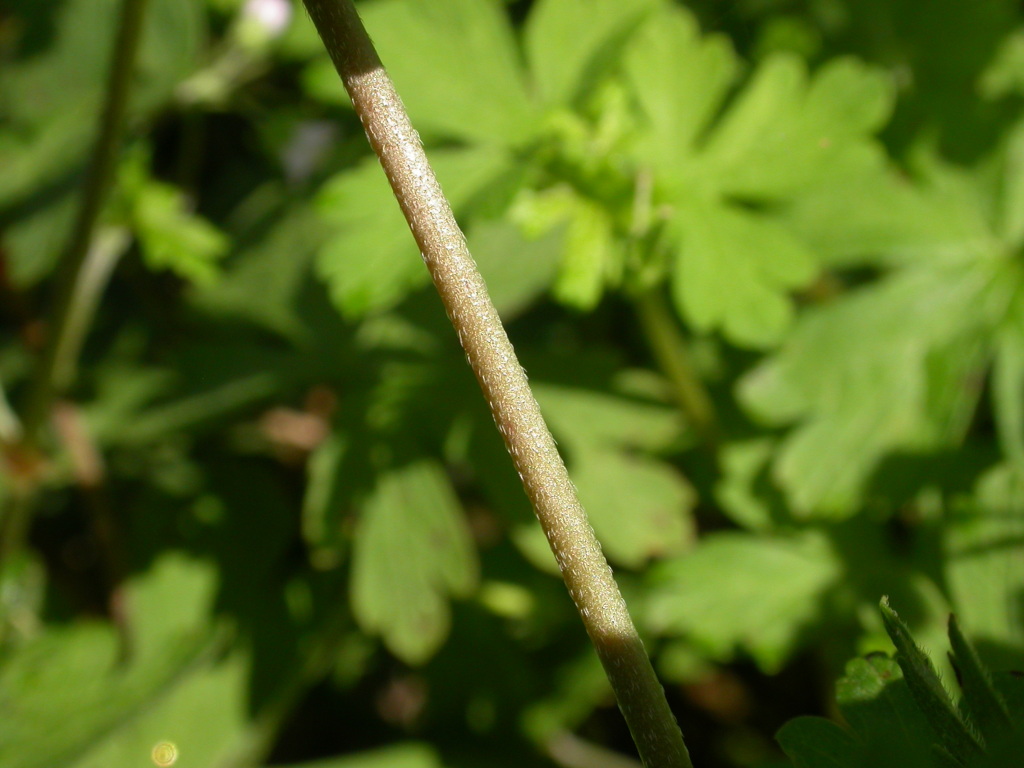Geranium homeanum
Turcz. Rainforest Crane's-billProstrate to scrambling perennial; stems to c. 70 cm long, with sparse, coarse, recurved to retrorse hairs; taproot thickened and branched, sometimes rhizomic. Leaves reniform to pentagonal, 1–4.5 cm long, palmatisect to palmatifid with 5(–7), broad, trisected, sometimes toothed primary lobes; ultimate lobes truncate to obtuse with short mucro; upper surface glabrescent or with sparse curved hairs; stipules narrow-triangular, long-acuminate. Flowers solitary or paired; peduncles 1.7–2.8 cm long; pedicels 1.5–2.5 cm long; sepals elliptic to obovate, 3–3.5 mm long, obtuse, glabrescent or with tiny glandular and appressed eglandular hairs and occasional longer hairs, margin (of at least the inner pair) broad-hyaline, mucro 1–1.5 mm long; petals obovate, 3.5–5.5 mm long, obtuse, truncate or retuse, pink at apex, grading to white; anthers off-white with fine purple dehiscence lines. Fruits 12–14 mm long; mericarps sparsely pubescent with short c. recurved hairs, suture margins not ciliate; seed red-brown, slightly rugose with small shallow elongate alveolae. Flowers throughout the year, mostly Oct.–Mar.
GleP, Brid, VVP, GipP, OtP, WaP, Gold, CVU, GGr, EGL, EGU, WPro, HSF, HNF, OtR, Strz, MonT, HFE, VAlp. Also SA, Qld, NSW, ACT, Tas. New Zealand. Common throughout high-rainfall areas and moist environments including rainforest margins, creek banks and wet gullies, mostly in eastern Victoria (but with isolated occurrences in the Grampians and near Portland), occurring rarely in dry sites.
Characterized by small flowers with elliptic to obovate sepals with broad hyaline margins, and taproot which is thickened and branched, not napiform. Lower stem indumentum may be deciduous with age. Hybridises with G. potentilloides var. potentilloides and G. neglectum.
Smith, L.P. (1999). Geranium. In: Walsh, N.G.; Entwisle, T.J., Flora of Victoria Vol. 4, Cornaceae to Asteraceae, pp. 219–233. Inkata Press, Melbourne.
 Spinning
Spinning


